 |
Analysis of Data from Designed Experiments |
 |
|
Strip Plot Design |
Analysis Using SPSS
Main Procedure is:
Start →All Programs → SPSS for Windows → SPSS 15.0/ SPSS13.0/ SPSS10.0 (based on the version available on your machine) → Enter data in Data Editor → Analyze → GLM → Univariate → yield → [puts yield under Dependent list: ] → rep → [put rep under Fixed Factor(s): ] A → [put A under Fixed Factor(s):] B → [put B under Fixed Factor(s):] Continue → Model... [Opens Model dialogue box] → Custom → Build Term(s) → Main effects → [puts A, B under Model:] Interaction → rep → A → B → [puts rep*A, rep*B and A*B under Model:] → Run All.
Data
Input:
For
performing analysis, input the data in the following format.
{Here one can call the replication as rep, first strip treatments as A and
second strip treatments as B. (It may, however, be noted that one
can retain the same name or can code in any other fashion).
Following
are the brief description of the steps along with screen shots.
· Open Data editor: Start → All Programs → SPSS for Windows → SPSS 15.0/ SPSS13.0/ SPSS10.0
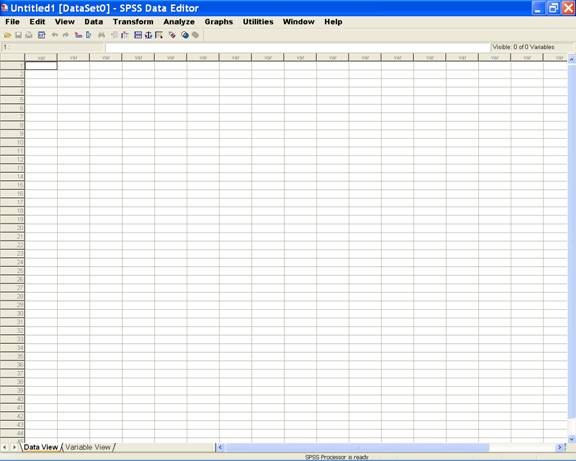
· Enter data in SPSS Data Editor. There are two views in SPSS Data Editor. In variable view, one can define the name of variables and variable types string or numeric and data view gives the spreadsheet in which data pertaining to variables may be entered in respective columns. In the present case, we enter data in numeric format.
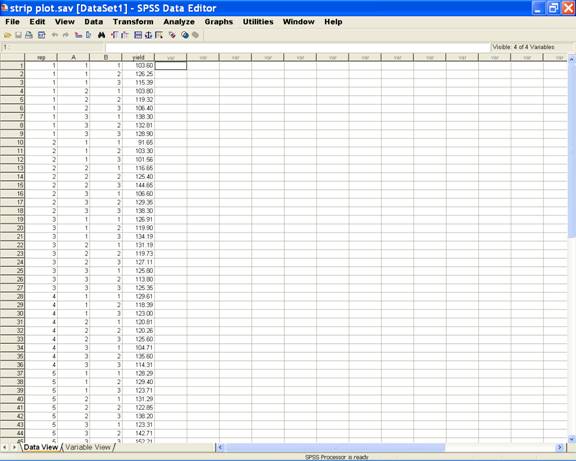
· Once the data entry is complete, choose Analyze from the Menu Bar. Now select Analyze → General linear Model → Univariate.
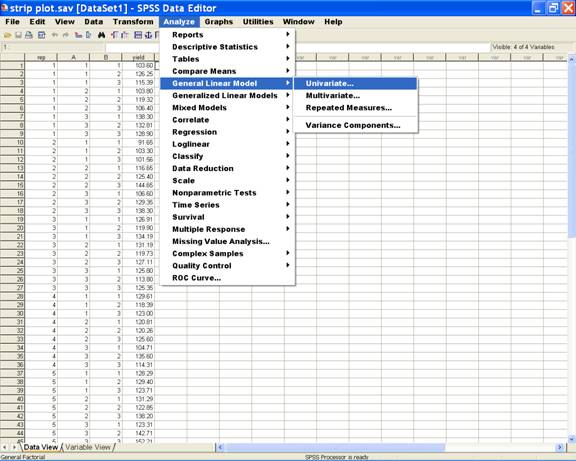
-
This selection displays the following screen:
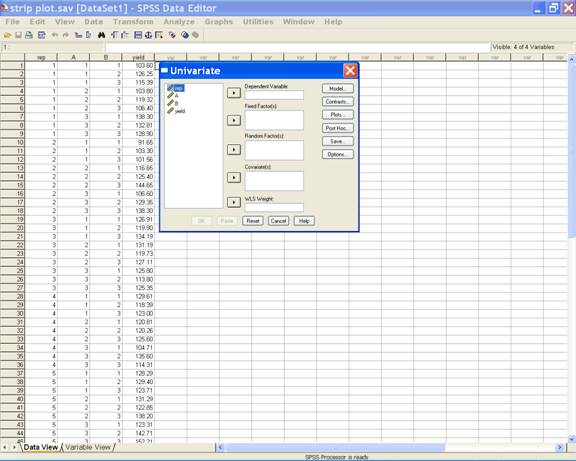
· Select yield and send it to the Dependent Variable; rep, A and B may be selected for Fixed Factor(s) box.
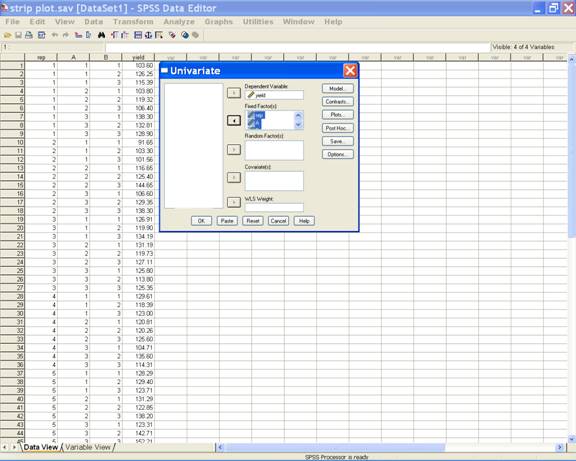
-
For the Interactions select Model in the Univariate dialog box i.e. → Model... [Opens Model dialogue box] → Interaction→ rep → A → [puts rep*A under Model:].Similarly rep*b and a*b can also be put under the model.
This selection displays the following screen.
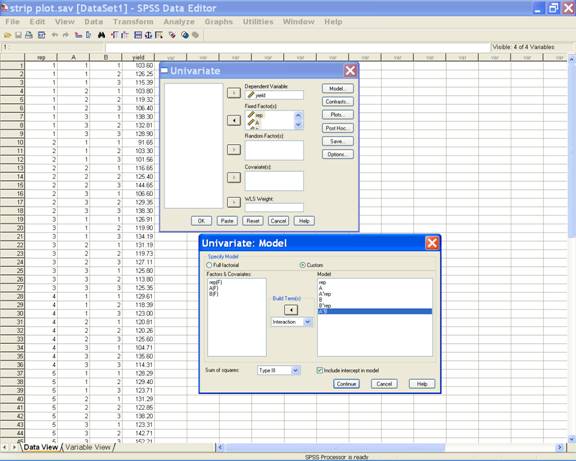
·
Click Continue to return to the Univariate dialog
box
Syntax
for testing I strip with error (a).
Click Paste on the Univariate dialog box to get the commands in syntax editor. Now define model as per design adopted to analyze the data. Here it is
/Test A vs rep*A.
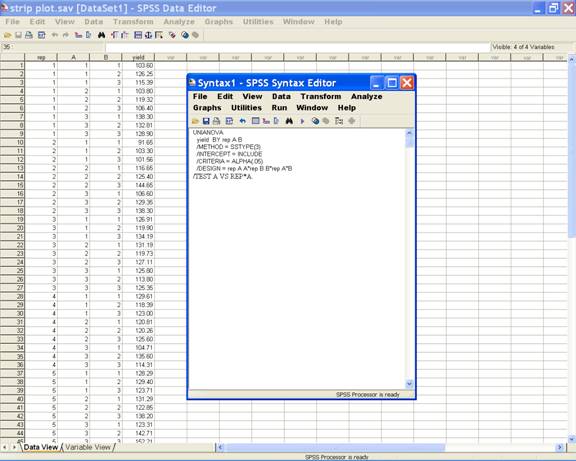
·
Click Run → All.
We could not find the syntax for pairwise comparisons by selecting the appropriate error term. For making all possible pairwise comparisons, one may, however, compute only the means from the software and compute the minimum significant differences using the given formulae on the click of mouse.
To
perform the analysis, the following syntax may be used after creating
the data file.
UNIANOVA
yield BY rep A B
/METHOD = SSTYPE(3)
/INTERCEPT = INCLUDE
/CRITERIA = ALPHA(.05)
/DESIGN = rep A A*rep B B*rep A*B
/TEST A VS REP*A.
Analysis Using SAS Analysis Using SPSS
Home Descriptive Statistics Tests of Significance Correlation and Regression Completely Randomised Design RCB Design
Incomplete Block Design Resolvable Block Design Augmented Design Latin Square Design Factorial RCB Design
Partially Confounded Design Factorial Experiment with Extra Treatments Split Plot Design Strip Plot Design
Response Surface Design Cross Over Design Analysis of Covariance Diagnostics and Remedial Measures
Principal Component Analysis Cluster Analysis Groups of Experiments Non-Linear Models
Copyright Disclaimer How to Quote this page Report Error Comments/suggestions
(Under Development)
For
exposure on SAS, SPSS,
MINITAB, SYSTAT and
MS-EXCEL
for analysis of data from designed experiments:
Please see Module I of Electronic Book II: Advances in Data Analytical Techniques
available at Design Resource Server (www.iasri.res.in/design)